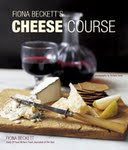
Despite my
strictures on the Great British Cheese Festival there was one stand-out event and that was organiser Juliet Harbutt’s talk and tasting on the ‘rising stars’ of British cheese. A number of them were ones I’d already discovered, some were new but as it's
British Cheese Week I urge you all to track them down:
New Forest WhiteI wasn’t sure I liked this cheese - a soft goats’ cheese flavoured with honey - when I first tasted it. It grew on me but you’d have to treat it as a dessert cheese. I can imagine it being fabulous with figs and a sweet wine like Samos Muscat
Morangie BrieMy discovery of the day - an ultra-rich buttery Brie with more than a hint of mushrooms which picked up the award for Best Scottish Cheese. Made by the same cheesemaker who makes Strathdon Blue and Harbutt’s Blue Monday (below) - half a mile from the Glenmorangie distillery (hence the name)
MoonshineAn attractive Irish semi-soft Emmental-style cheese from Moon Shine Dairy Farm Co Galway that Harbutt described as tastiing of ‘fermented fruit’ (odd, but I know what she meant - it was a bit peary). Organic and biodynamic
Wyfe of BathAnother semi soft cheese from Bath Soft Cheese, described by Harbutst as smellling like ‘cheese scones’ (an apt description) Pleasant but didn’t really do it for me.
DuddleswellA sheeps cheese from Sussex High Weald Dairy. I'm a big fan of sheeps’ cheese so this really rocked my boat. Lovely mellow, gentle sweetness but tangy and characterful too.
Stoney CrossA tomme-style cheese from Lyburn Farmhouse Cheesemakers in Hampshire. Rich and creamy but with a nice, balancing acidity.
HafodA new(ish) organic Welsh cheddar I’ve raved about on this blog
before. Less complex (aka funky) than some of the best known artisanal cheddars such as Keens but more approachable. Lovely clean, crumbly texture - none of that ‘soapiness’ you get from block cheddars.
Blue MondayLaunched
last year by Juliet and ex Blur guitarist Alex James this sexy-looking blue has the distinction of being sold in a square.More like a Gorgonzola than a Stilton in taste and texture - mellow and creamy.
SticheltonThis cheese, which is made by Joe Schneider on the
Welbeck Estate, can’t be classified as Stilton because if’s unpasteurised but it’s Stilton in all but name. Already an oustanding British cheese, if not one of the best blues in the world.
 I'm always so impressed when I find a restaurant doing something clever and interesting with cheese and this was a stellar cheese course at a small restaurant called Larcen in Agde on the Languedoc coast.
I'm always so impressed when I find a restaurant doing something clever and interesting with cheese and this was a stellar cheese course at a small restaurant called Larcen in Agde on the Languedoc coast. 






